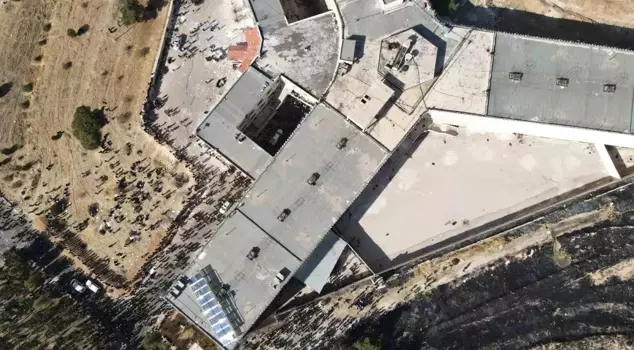
10.12.2024 19:41
In Syria, it has been reported that the detailed search operations conducted by the civil defense organization White Helmets at Sednaya Prison, which is referred to as a 'human slaughterhouse' due to the torture by Bashar al-Assad's regime, have been completed, and no evidence of secret cells was found. Among the imprisoned inmates, those who had been detained for many years have also regained their freedom.
```html
Search operations have been completed at the "torture center" Sednaya Prison of Bashar al-Assad's regime in Syria. Among the significant names released are pilot Raghid al-Tatari, who opposed his father Hafiz al-Assad's order to bomb the city of Hama in the 1980s and had been imprisoned for 43 years, and Tal al-Maluhi, who was arrested at the age of 19 in 2009 for writing an article criticizing the government for corruption.
While many released detainees reunite with their families, search operations initiated due to claims of secret underground cells in the prison continued. In a statement from the civil defense organization White Helmets, it was noted that expert teams thoroughly searched all sections of the prison but found no evidence of undiscovered secret cells. It was announced that the search operations have been completed.
FREEDOM AFTER 41 YEARS
Detainees who escaped from Assad's captivity years later are in shock. A Jordanian who had been imprisoned since 1983 regained his freedom after 41 years, but it was observed that his psychological condition was not good.
ASSAD'S DEATH CENTER
It is estimated that the total area of Sednaya Prison, located 30 kilometers north of Damascus, is approximately 1.4 square kilometers. The prison consists of two main buildings capable of housing 10,000 to 20,000 detainees. The white building houses those arrested for crimes such as murder, theft, corruption, or desertion from military service, while the red building holds civilians and military personnel imprisoned for their political views and activities.
Human rights groups and victims describe Sednaya as a "death camp" where the Assad regime displayed all its brutality, especially after the protests of the "Arab Spring" that began in 2010 and affected the region. Following the protests that spread across the country in 2011, demanding political reforms and the end of the Assad family's autocratic rule, the first address for detentions, torture, and executions became "Sednaya."
According to human rights organizations, more than 30,000 detainees were executed in the prison through "mass executions" between 2011 and 2018, dying from torture, neglect, or starvation. Satellite images from 2017 revealed that a crematorium was built in the prison to dispose of the bodies of those killed.
According to United Nations (UN) data, more than 100,000 Syrians have been missing across the country since 2011. It is believed that a large portion of them are held in Sednaya.
```